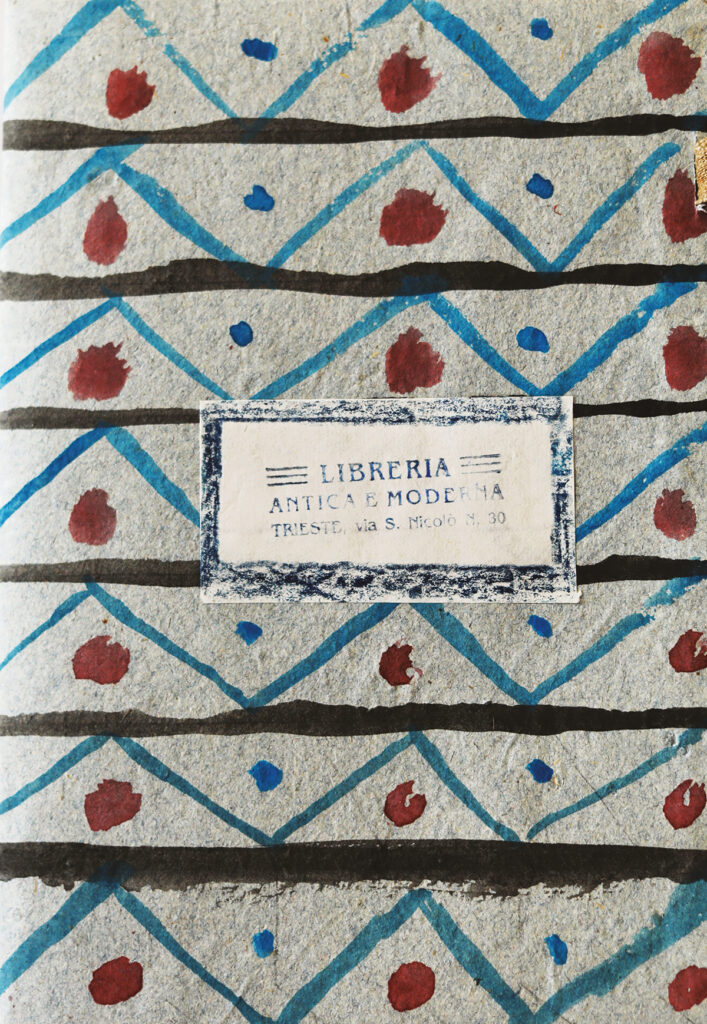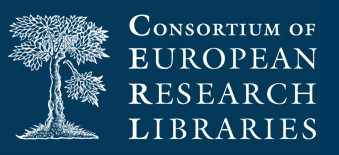Saba tried his hand at publishing to earn some money and put out the poetry collections that make up the Canzoniere. He publishes Coi Miei occhi (With My Eyes) (1912) in Florence through the “Libreria della Voce”
He had to pay for the printing and entrusted the watercolour decoration for the cover to Virgilio Giotti (26). Back in Trieste, during his apprenticeship as a bookseller, he published limited editions of pamphlets of a few pages, called “plaquettes” in bibliophilia. From 1919 to 1932 he took on Virgilio Giotti as a collaborator on the editorial side. Together they produced manuscripts or typescripts with drawings and decorations in ink, put on sale in limited editions to selected customers. The copies were typewritten on old paper, thread-sewn and produced in print runs from 5 to 25 copies, with covers covered with paper hand-decorated by Virgilio Giotti, similar to those produced by the Remondini printing house in Bassano. Of the artist, a fine poet in vernacular and in Italian, and Saba’s dearest friend at the time, the Libreria antiquaria published Il mio cuore e la mia casa, the edition of the poems and prose in Italian, with a print run of 200 numbered copies (27).
Firenze, Libreria della Voce, 1912
La «Voce» di Prezzolini accetta di editare e distribuire il volume, ma le spese sono a carico dell’autore, che sceglie formato e copertina decorata all’acquerello da Virgilio Giotti.
Saba dedica l’edizione «A Giorgio Fano». La pubblicazione comprende la sezione dei «Nuovi versi alla Lina».
Instead, for the plaquettes of his verses from 1919, Intermezzo quasi giapponese, Saba sought out the collaboration of the painter Vittorio Bolaffio (28). The compositions were influenced by the poetic form of haiku, even if Saba did not apply its metric and rhythmic scheme. Vittorio Bolaffio outlines a geisha on the title page, influenced by the fascination aroused in him by oriental cultures.
In the meantime, Saba published the collections he was composing, in order to spread his poetry more widely and earn a little money. The editions of Il Canzoniere 1900-21 (29) and Ammonizione ed altre poesie: 1900-1910, exhibited in the Section Umberto Saba and his relationship with the poetry of Francesco Petrarca (6), were published by Libreria antiquaria in-house.
In the post-war period, Umberto Saba dedicated himself to writing aphorisms and short prose that he titles Scorciatoie e raccontini (Shortcuts and short stories) (Mondadori 1946). In one of the passages, he narrates how one morning, in December 1919 or 1920, someone came to buy Le ricordanze della mia vita by Luigi Settembrini. The buyer, a journalist for “Il Popolo d’Italia” who he had known since he had been working for the newspaper: it was Benito Mussolini (25).




